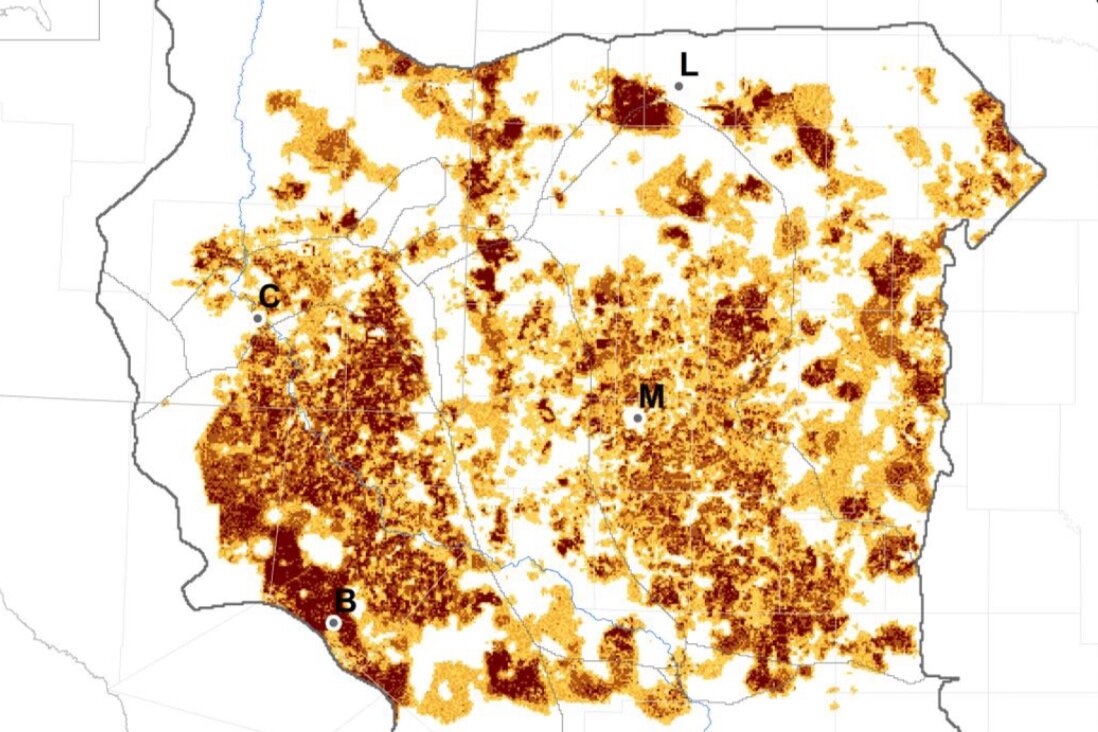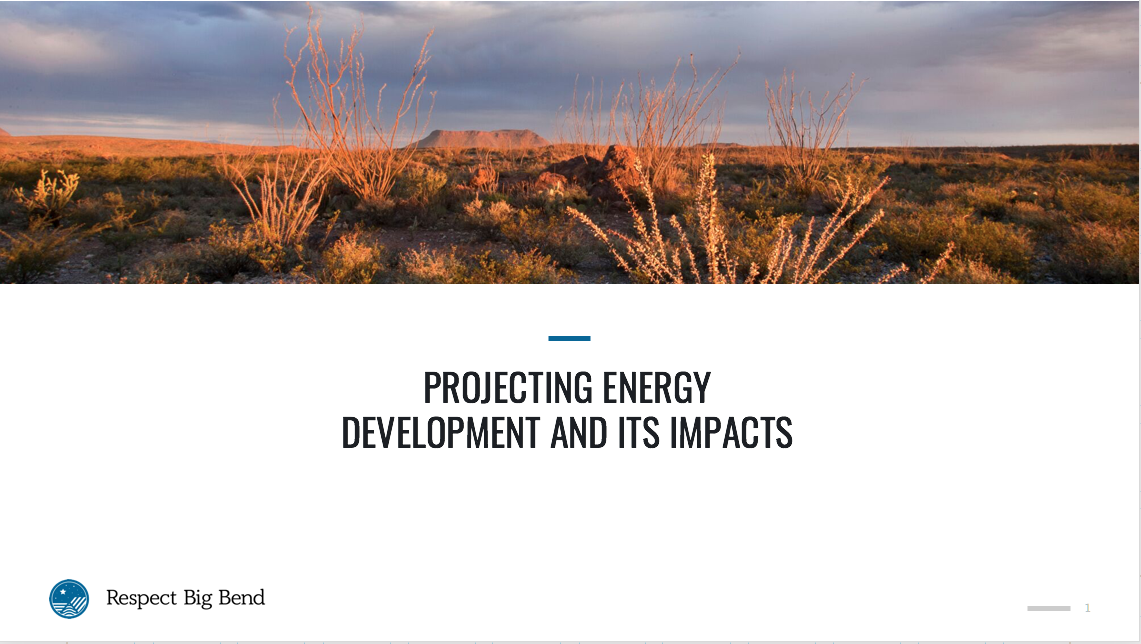
NEWS & INFORMATION

Projected Landscape Impacts from Oil and Gas Development Scenarios in Permian Basin, USA
Projecting landscape impacts from energy development is essential to land management decisions. The authors forecast landscape alteration resulting from oil and gas well-pad construction across Permian Basin by projecting current landscape trends through 2050.

Respect Big Bend Public Opinion Research Presentation
This is a video presentation of the findings of public opinion research conducted on behalf of the Cynthia and George Mitchell Foundation in 2017 and 2018. These findings helped inform development of the Respect Big Bend Coalition and its efforts on behalf of the communities and natural resources of the Big Bend Region.

U.S. Imperiled Species are Most Vulnerable to Habitat Loss on Private Lands
These results of this study underscore the importance of federal lands in protecting habitat for imperiled species and highlight the need to improve habitat protection on private lands for long‐term conservation.

Sustainable Development Must Account for Pandemic Risk
The United Nations (UN) launched the 2030 Agenda for Sustainable Development to address an ongoing crisis: human pressure leading to unprecedented environmental degradation, climatic change, social inequality and other negative planet-wide consequences. This crisis stems from a dramatic increase in human appropriation of natural resources to keep pace with rapid population growth, dietary shifts toward higher consumption of animal products and higher demand for energy. There is an increased recognition that Sustainable Development Goals (SDGs) are linked to one another, and priorities such as food production, biodiversity conservation and climate change mitigation cannot be considered in isolation.

This Map Shows an Unlikely Source of America's Light Pollution
The map was created by subtracting population from light output, which highlights areas that throw off more light than predicted given their population density. It isn’t the glowing metropolitan centers of New York and Los Angeles that stand out, but regions like the oil-rich corner of South Dakota or the final leg of the Mississippi River. Some of the most prominent patterns on the map appear in regions where shale oil is being extracted.

Energy Development Projections in the Big Bend Region
Michael Young, PhD of the Bureau of Economic Geology at the University of Texas at Austin made this presentation at The Big Bend Seminar Series on Energy Development at the Espino Conference Center at Sul Ross State University in Alpine Texas on January 15, 2020. Per Dr. Young, the projections cited should be considered preliminary an subject to change.

Dark Skies Initiative
McDonald Observatory is collaborating with local communities and businesses, including the oil and gas industry, to promote better nighttime lighting, i.e., cost efficiency, improved visibility & safety, and dark skies for the Observatory.

Our Nights are Getting Brighter, and Earth is Paying the Price
If light bulbs have a dark side, it’s that they have stolen the night. The excess light we dump into our environments is endangering ecosystems by harming animals whose life cycles depend on dark. We’re endangering ourselves by altering the biochemical rhythms that normally ebb and flow with natural light levels.

Texans' Views of the Trans-Pecos
In the focus groups we conducted earlier this year—detailed in first of this two-part blog post—we asked area residents if they knew what other Texans thought about the Trans-Pecos area of the greater Big Bend region of West Texas. Do Texans think about it at all? Do they care about it?

Voices from the Trans-Pecos: Exploring Public Opinion on Energy Development
Anticipating possible conflict between energy development and the rural communities of the Trans-Pecos, the Cynthia and George Mitchell Foundation commissioned Hudson Pacific to conduct public opinion research on how energy development in the region is perceived by Texans statewide, with particular focus on area residents’ opinions.

